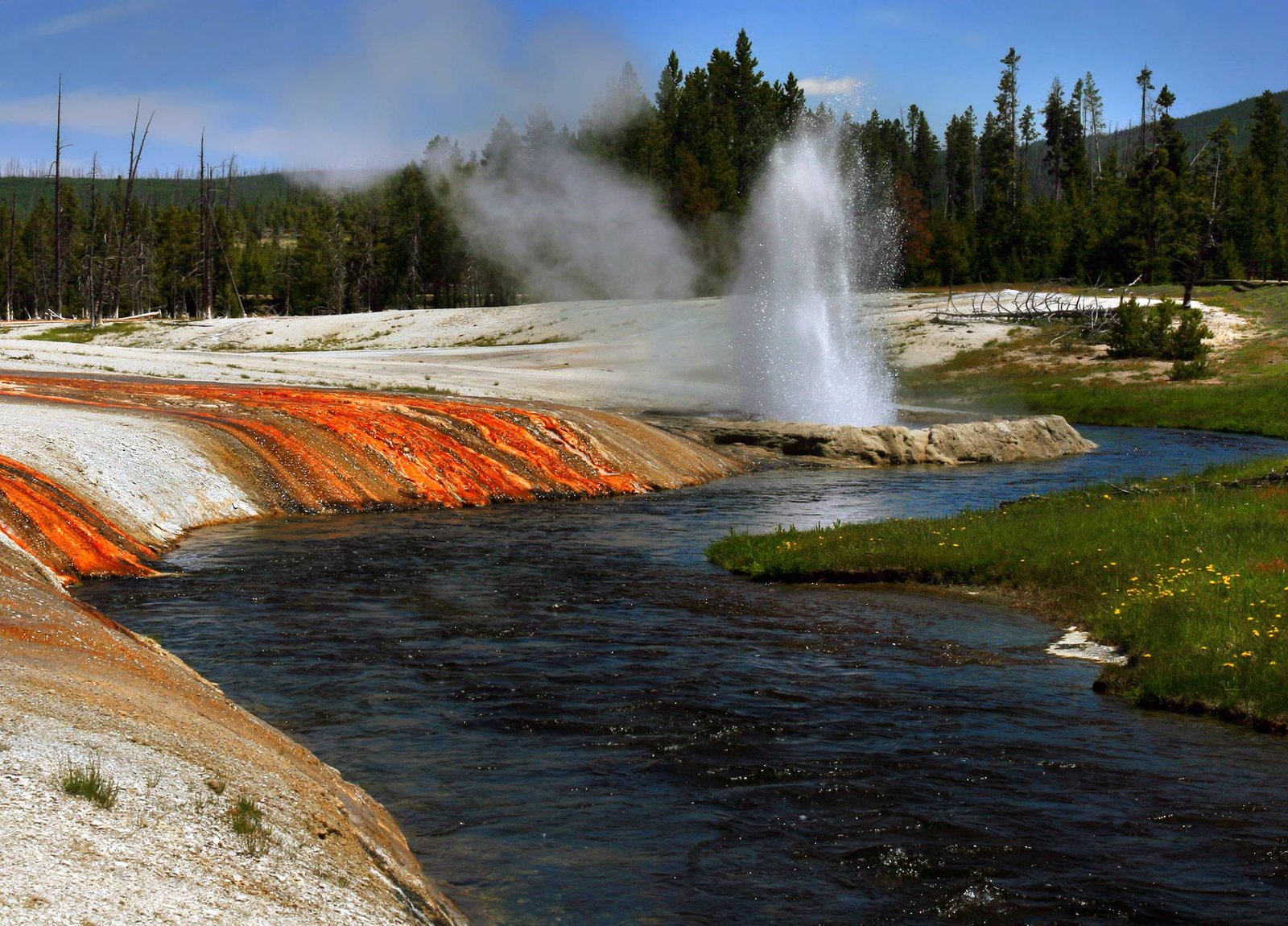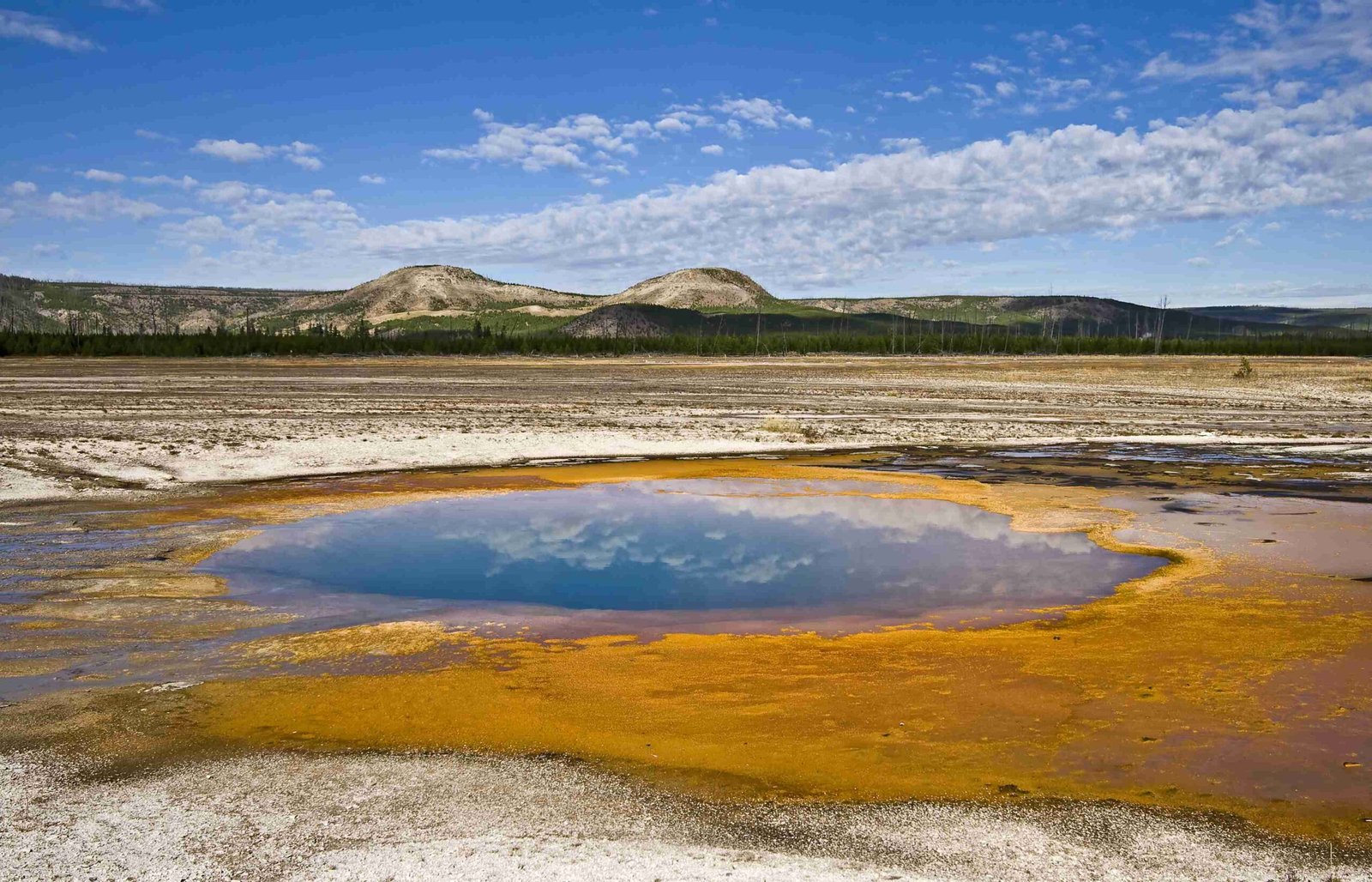The Yellowstone National Park volcano status remains at NORMAL alert level with a GREEN aviation color code. Recent monitoring data shows no significant volcanic activity. On July 23, 2024, a hydrothermal explosion occurred at Biscuit Basin, near Black Diamond Pool. This event, while notable, was not caused by volcanic activity but by sudden water-to-steam transition in the shallow hydrothermal system. Seismicity, ground deformation, and emissions continue at normal background levels.
What is the Current Volcano Alert Level for Yellowstone?

As of the latest updates, the Yellowstone National Park volcano status is:
- Volcano Alert Level: NORMAL
- Aviation Color Code: GREEN
These designations indicate that the volcanic system is in a non-eruptive, background state. The Yellowstone Volcano Observatory (YVO) and National Park Service (NPS) continuously monitor the park’s geological activities to ensure public safety and scientific understanding.
What Recent Activity Has Occurred at Yellowstone?

The most significant recent event in Yellowstone was a hydrothermal explosion on July 23, 2024, at Biscuit Basin. Key points about this event include:
- Location: Near Black Diamond Pool in Biscuit Basin
- Cause: Sudden transition of water to steam in the shallow hydrothermal system
- Impact: Localized debris scatter and temporary closure of the affected area
- Volcanic Connection: Not directly related to volcanic activity
This event, while dramatic, is part of the normal range of geothermal activities in Yellowstone. It underscores the dynamic nature of the park’s hydrothermal features and the importance of ongoing monitoring.
How Does Yellowstone’s Volcanic History Inform Current Status?
Yellowstone’s volcanic history provides context for understanding its current status:
- Major Eruptions:
- 2.1 million years ago
- 1.3 million years ago
-
640,000 years ago
-
Eruption Impacts:
- Widespread volcanic deposits
- Significant climate effects
-
Formation of the current Yellowstone caldera
-
Recent Activity:
- Smaller hydrothermal explosions
- Continuous but low-level geothermal activity
This historical perspective helps scientists interpret current data and assess potential future scenarios. The long intervals between major eruptions and the current normal status suggest that large-scale volcanic activity is not imminent.
What Monitoring Systems Are in Place at Yellowstone?
The Yellowstone Volcano Observatory employs a comprehensive monitoring system:
| Instrument Type | Purpose | Data Collected |
|---|---|---|
| Seismometers | Detect earthquakes and ground movement | Seismic activity |
| GPS and InSAR | Measure ground deformation | Surface changes |
| Gas and Thermal Sensors | Monitor emissions | Gas composition and temperature |
These instruments provide real-time data, allowing scientists to:
- Detect subtle changes in volcanic and hydrothermal systems
- Assess potential risks
- Inform park management decisions
The recent hydrothermal explosion at Biscuit Basin has prompted increased monitoring efforts in that area, including debris mapping and water sampling.
Which Geothermal Features Are Currently Under Close Observation?
Following the July 2024 event, several geothermal features are under heightened scrutiny:
- Biscuit Basin:
- Black Diamond Pool
-
Black Opal Pool
-
Nearby Areas:
- Black Sand Basin
- Other thermal basins in proximity
Observations include:
- Ground stability assessments
- Water clarity and temperature monitoring
- Gas emission measurements
While Biscuit Basin remains closed for the 2024 season, other areas of the park, including the Grand Loop Road, remain open to visitors. The NPS provides regular updates on feature accessibility and safety precautions.
What Should Visitors Know About Yellowstone’s Current Volcano Status?
For visitors planning a trip to Yellowstone, here are key points to remember:
- Safety: The park is generally safe, with volcanic activity at normal levels.
- Closures: Biscuit Basin is closed for the 2024 season due to the recent hydrothermal explosion.
- Updates: Check the official NPS website for the most current information on park conditions and access.
- Geothermal Areas: Respect closures and stay on designated boardwalks in thermal areas.
- Preparedness: Be aware of the dynamic nature of Yellowstone’s geothermal features.
Visitors are encouraged to enjoy the park’s unique geological wonders while remaining mindful of safety guidelines and any park announcements regarding the Yellowstone National Park volcano status.
How Does Yellowstone’s Current Status Compare to Other Volcanic Systems?
Yellowstone’s current NORMAL status can be contextualized by comparing it to other volcanic systems:
- Active Volcanoes (e.g., Kilauea in Hawaii): Often show frequent eruptive activity
- Dormant Volcanoes: May have longer periods of inactivity but potential for future eruptions
- Extinct Volcanoes: No expected future eruptions
Yellowstone falls into a unique category:
- Large caldera system
- Long periods between major eruptions
- Continuous but low-level geothermal activity
This comparison highlights Yellowstone’s distinctive nature and the importance of its ongoing monitoring and research programs.
What Future Research is Planned for Yellowstone’s Volcanic System?
The Yellowstone Volcano Observatory and partnering institutions have ongoing research initiatives:
- Long-term Monitoring:
- Continued seismic, deformation, and gas emission data collection
-
Analysis of long-term trends in volcanic and hydrothermal activity
-
Geological Studies:
- Mapping of past eruption deposits
-
Dating of volcanic materials to refine eruption history
-
Hydrothermal System Research:
- Investigation of the recent Biscuit Basin explosion
-
Modeling of hydrothermal system dynamics
-
Climate Impact Studies:
- Analysis of how past eruptions affected global climate
- Projections of potential future eruption impacts
These research efforts aim to enhance our understanding of Yellowstone’s complex geological systems and improve hazard assessments and public safety measures.
References:
1. National Park Service – Update on the July 23 Biscuit Basin hydrothermal explosion
2. Utah News Dispatch – Yellowstone Volcano Observatory releases preliminary report on Biscuit Basin explosion
3. National Park Service – Current Conditions – Yellowstone National Park

